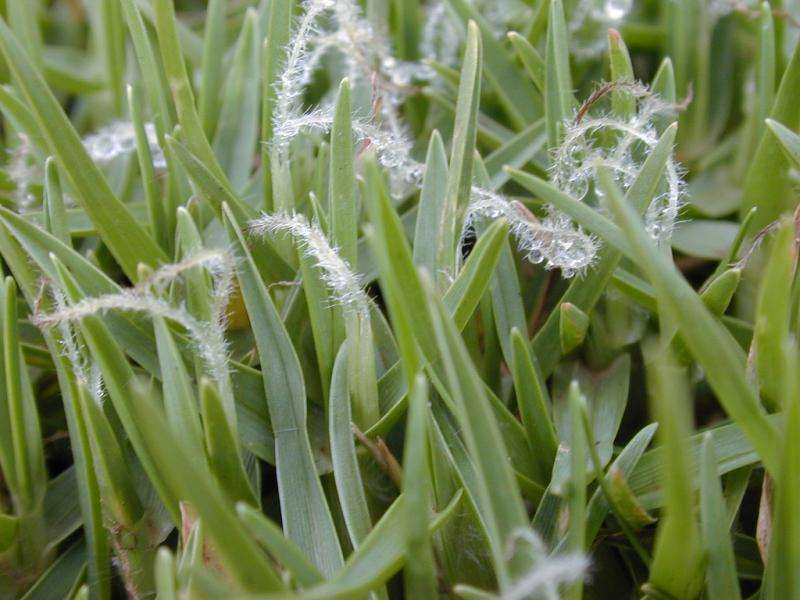Cropping into kikuyu could benefit livestock, soil carbon

A study of grazing systems on a Bremer Bay farm suggests cropping into perennial pasture could increase livestock production without depleting soil carbon levels.
The research involved South Coast Natural Resource Management carbon farming project officer Charlotte Powis and UWA soil science PhD student Kanako Tomita.
They compared soil carbon stores in annual and different aged perennial pasture on the Reddington family's 2000ha property over the past three years.
Ken Reddington first planted kikuyu grass (Pennisetum clandestinum) on the sheep and cattle farm in 1982 to combat erosion or 'paddock blow' caused by strong winds.
Wind erosion limits livestock grazing options and diminishes soil fertility by reducing its carbon content.
Soil carbon is important for maintaining healthy soil structure and stability by contributing to physical, chemical and biological processes such as enhancing its water holding capacity and providing energy for nutrient cycling.
Mr Reddington says kikuyu stabilised the top soil, responded vigorously to summer rains and provided high quality green feed for his livestock.
However, after 20 years he and son Paul noticed it had become less productive and was starting to choke out some annual species, such as legumes and other grasses.
They cropped into the kikuyu with canola for two years to try to control the kikuyu, rejuvenate the annuals and provide an extra cash crop.
Carbon stores across five different pasture considered
Ms Powis and Ms Tomita examined the Reddington's pasture experiments by comparing carbon stores in soil under annual pasture, eight-year-old kikuyu pasture, 15-year-old kikuyu pasture, 15-year-old kikuyu pasture converted to canola and 22-year-old kikuyu pasture.
They took soil samples from random paddocks across the three grazing systems from depths of zero to 30cm to determine total carbon content.
Ms Powis says their results were surprising.
"We measured different aged kikuyu paddocks and noticed that after 15 years the total carbon level was significantly higher in the kikuyu grazing system than the annual grazing system," she says.
"Cropping for up to two years into the kikuyu did not change the total soil carbon."
Ms Powis says cropping into kikuyu could allow farmers to be more seasonally opportunistic without jeopardising their soil carbon stores and make their grazing systems more robust against future climate variability.
Mr Reddington says the results were encouraging for implementing sustainable farming practices.
"We are not on tenterhooks anymore wondering when the break of the season was coming and would we lose top cover and feed before the break arrived," he says.
Provided by Science Network WA
This article first appeared on ScienceNetwork Western Australia a science news website based at Scitech.



















